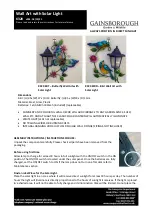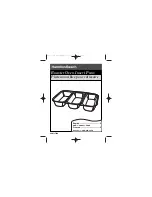
97
practical
applications
Blindstitch Wide no. 9
►
for medium weight to heavy fabric
preparation
►
finish the raw edges as desired
►
fold the hem and baste or pin in place
►
fold the garment back over the right side of the fabric to
expose the finished lower edge (see drawing)
►
place the work under the presser foot with the guide
positioned against the folded back fabric
Sewing
►
the needle should just pierce the edge of the fold
►
after sewing about 4” (10cm), check both sides of fabric
and adjust the stitch width if necessary
Blind
wide
Stretch overlock no. 13
►
ideal for fluffy, thick materials such as terry cloth, felt
and leather
Sewing
►
fabric edges are overlapped and the stitch is placed on
the seam allowance which produces a very flat, durable
seam
►
sew stretch overlock along the fabric edge
►
the stitch should sew over the edge of the top layer of
fabric on the right swing of the needle
flat Joining Seam
Backside of Fabric
Frontside
►
Blindstitch foot no. 5
►
Reverse pattern foot no. 1C
032298.53.04_1204_B820_EN
Summary of Contents for 820
Page 54: ...54 032298 53 04_1204_B820_EN ...
Page 86: ...86 Impressions 032298 53 04_1204_B820_EN ...
Page 139: ...139 Sewing Stitch Categorys Alphabets Block Double Block 032298 53 04_1204_B820_EN ...
Page 140: ...140 Sewing Stitch Categorys Quilting Text Script 032298 53 04_1204_B820_EN ...
Page 141: ...141 Sewing Stitch Categorys Kyrillic Hiragana 032298 53 04_1204_B820_EN ...
Page 142: ...142 Sewing Stitch Categorys Katakana Kanji 032298 53 04_1204_B820_EN ...
Page 148: ...Index 148 2012 04 EN 032298 53 04 032298 53 04_1204_B820_EN ...
















































